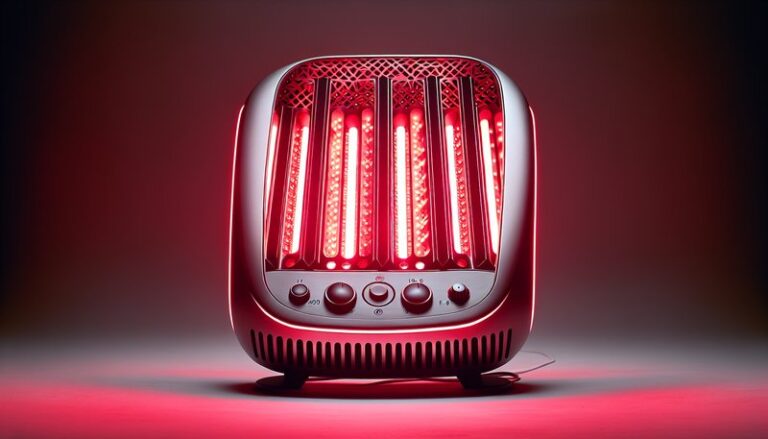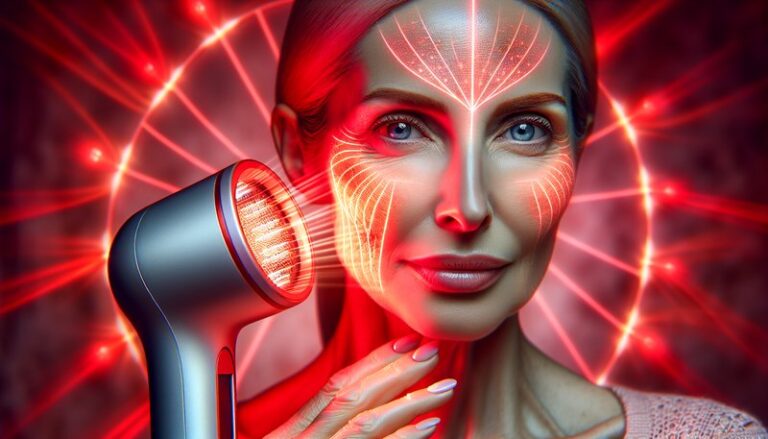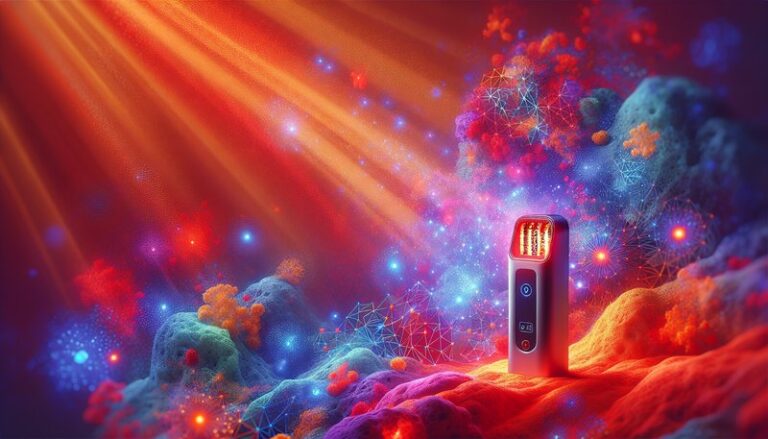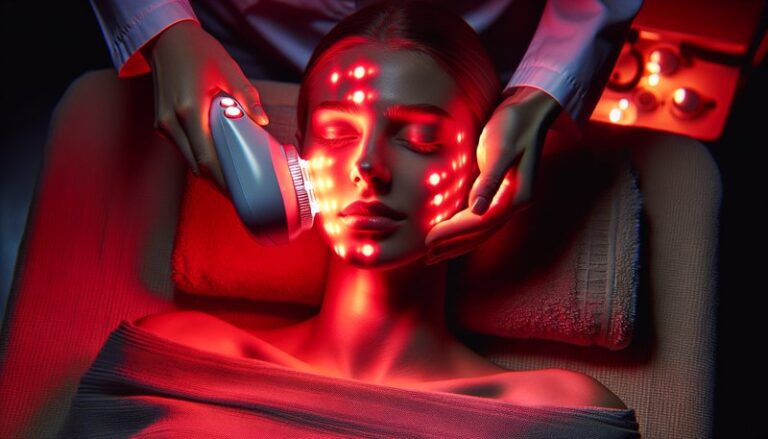Is Red Light Therapy Good For Spider Veins?
Is Red Light Therapy Good for Spider Veins?
Are you struggling with the appearance of spider veins and seeking effective treatment options?
In this article, we’ll explore the use of red light therapy as a potential solution for spider veins. We’ll cover what red light therapy is, its benefits, potential drawbacks, and alternatives you might consider before deciding on treatment.
Key Takeaways
- Red light therapy may improve circulation and help reduce the appearance of spider veins.
- This non-invasive treatment has minimal side effects compared to traditional methods.
- It’s essential to consider the efficacy and existing alternatives before pursuing red light therapy.
What is Red Light Therapy?
Red light therapy (RLT) is a treatment that utilizes low-level wavelengths of red light to penetrate the skin and promote healing and regeneration. This therapy is based on the principle that certain wavelengths of light can stimulate cellular processes, enhancing blood flow, reducing inflammation, and encouraging tissue repair.
RLT is often used for various dermatological conditions, including acne, psoriasis, and even hair loss. Recently, it has gained attention as a potential remedy for improving the appearance of spider veins, which are small, dilated blood vessels that can occur near the skin’s surface.
What are the Benefits of Red Light Therapy?
Red light therapy offers a range of potential benefits, particularly for conditions like spider veins. The following sections elaborate on these advantages in detail.
Improved Blood Circulation
One of the primary benefits of RLT is its ability to enhance blood circulation. Improved blood flow can help reduce the visibility of spider veins by promoting better oxygenation and nutrient delivery to affected tissues.
Discover our insights Does Red Light Therapy Promote Hair Growth?
Pain Reduction
Users of red light therapy often report a reduction in pain and discomfort associated with spider veins. This is particularly beneficial for individuals who experience aching or heaviness in their legs due to venous issues.
Non-Invasive Procedure
Unlike surgical options, red light therapy is non-invasive. This means individuals can receive treatment without the risks associated with invasive procedures, such as scarring or lengthy recovery times.
Minimal Side Effects
RLT is generally well-tolerated, with few reported side effects. This makes it an appealing option for those who may not qualify for surgical treatments or those looking for gentler alternatives.
Is it Possible to Treat Spider Veins with Red Light Therapy?
Yes, it is possible to treat spider veins with red light therapy. Clinical studies and anecdotal evidence suggest that RLT can improve the appearance of spider veins when used consistently over time. However, results may vary, and it is essential to set realistic expectations.
What are the Advantages of Treating Spider Veins with Red Light Therapy?
Red light therapy offers several advantages for spider vein treatment:
- Convenience: Treatments can often be done in a clinical setting or at home with handheld devices, making it convenient for many individuals.
- Comfort: Most users find red light therapy sessions to be painless and relaxing, adding to the overall experience of treatment.
- Accessibility: RLT devices are increasingly available for home use, making these treatments more accessible to a broader audience.
What are the Disadvantages of Treating Spider Veins with Red Light Therapy?
Despite its benefits, there are disadvantages to consider:
- Variable Results: Not everyone responds to RLT in the same way, and some may not see significant improvements in their spider veins.
- Time Commitment: Effective treatment may require multiple sessions over a sustained period, which can be time-consuming.
- Cost: While RLT is generally less expensive than surgery, costs can add up, especially for home devices.
What are the Things to Consider Before Choosing Red Light Therapy?
Before opting for red light therapy for spider veins, consider the following important factors:
Consultation with a Specialist
It is advisable to consult with a dermatologist or a healthcare provider specializing in vein treatments before beginning RLT to determine if it is right for you.
Treatment Regimen
Understanding the proposed treatment plan, including the number of sessions required and their frequency, can help you gauge the time and financial investment needed.
Device Quality
If considering home devices, it’s crucial to research the quality and effectiveness of the products available on the market. Not all red light therapies are created equal.
What are the Alternatives to Red Light Therapy for Spider Veins?
In addition to red light therapy, various alternatives exist for treating spider veins. Consider the following options:
Sclerotherapy
Sclerotherapy involves injecting a solution into spider veins, causing them to collapse and fade over time. This is a widely used procedure known for its effectiveness.
Laser Treatments
Laser therapies target spider veins with concentrated light energy, effectively reducing their appearance. These treatments can provide quicker results than RLT but may be more invasive.
Compression Stockings
For individuals seeking a non-invasive solution, compression stockings can help improve blood circulation and minimize the appearance of spider veins while providing support.
Conclusion: Is it Recommended to Use Red Light Therapy for Spider Veins?
Red light therapy presents a promising, non-invasive option for those looking to reduce the appearance of spider veins. While it has several benefits and minimal side effects, results can vary greatly among individuals. It is advisable to consider this treatment as part of a broader discussion with healthcare professionals to determine the most suitable approach for your specific needs.
Get the complete insights in Does Red Light Therapy Kill Candida?
Frequently Asked Questions
Can red light therapy completely eliminate spider veins?
While RLT may reduce the appearance of spider veins, it is unlikely to completely eliminate them. Individual results vary, and a multi-faceted approach may be necessary for optimal results.
How many sessions of red light therapy are needed for visible results?
Most individuals may require several sessions, typically ranging from 6 to 12, depending on the severity of their spider veins and their body’s response to treatment.
Are there any side effects of red light therapy?
Red light therapy is generally well-tolerated, with very few side effects reported. Some users may experience mild skin irritation, which usually resolves quickly.
Is red light therapy suitable for everyone?
While RLT is safe for most individuals, consulting a healthcare provider is essential to determine if it is the right treatment for your specific health situation.
How does RLT compare to other vein treatments?
RLT is a non-invasive option that may offer a more gradual improvement compared to procedures like sclerotherapy or laser treatments, which can produce quicker, more pronounced results but may come with additional risks and recovery time.





